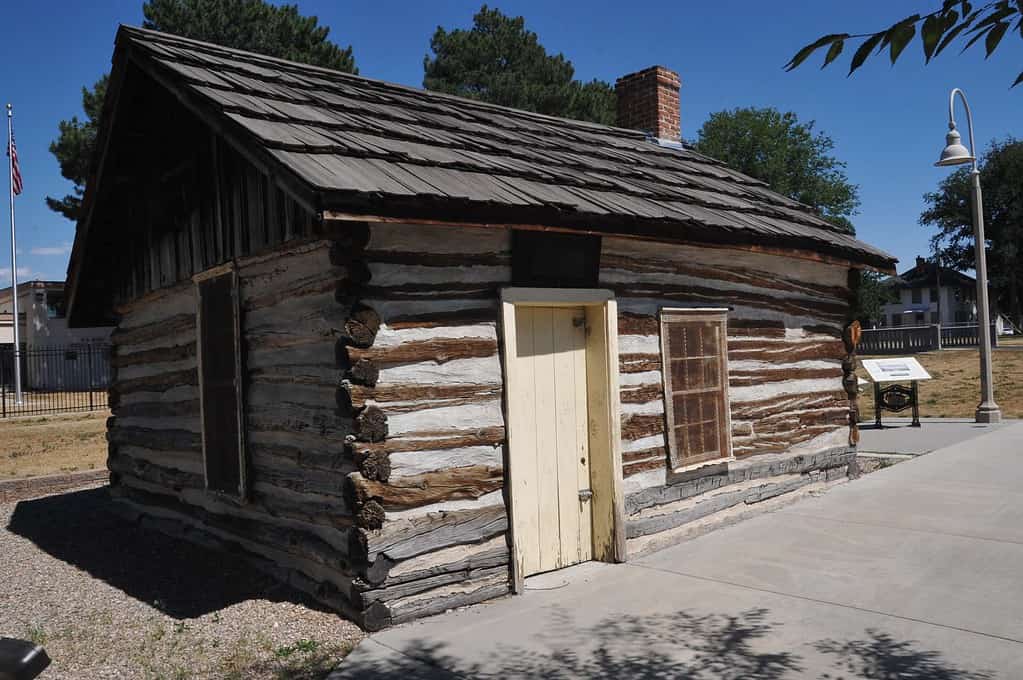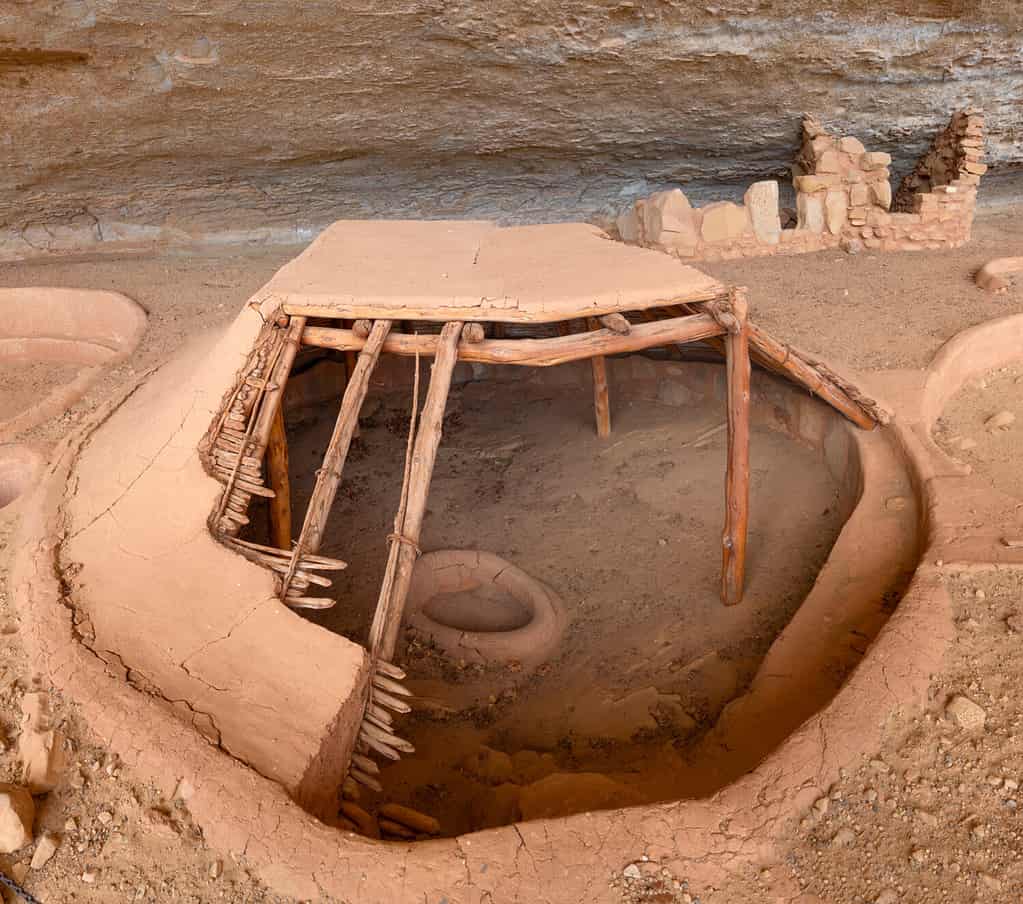
Idaho saw its first major stream of settlers as wagon trains traveled through the area along the Oregon Trail. Silver, copper, and gold mining in the state also beckoned people to Idaho, and permanent settlements sprung up as a result. Because of these early settlers, the oldest house in Idaho is more than 160 years old!
What is the Oldest House in Idaho?
The oldest house in Idaho is the John A. O’Farrell Cabin. While there is archaeological evidence showing that indigenous people had built semi-permanent homes in the area for thousands of years, no extant homes remain. The O’Farrell Cabin was built by the first white person seeking mining riches that permanently settled in the area.

The John A. O’Farrell Cabin is also the first permanent building built in Boise, Idaho, though it is not the oldest building in the state.
John A. O’Farrell Cabin: Where is the Oldest House in Idaho Located on a Map?
The oldest house in Idaho is in Boise, and it is more than 160 years old! Most permanent settlers to the region came in search of mined riches, and gold mining towns sprung up around Boise in the 1860s.
The John A. O’Farrell Cabin is also the first permanent building built in Boise, Idaho, though it is not the oldest building in the state. The Mission of the Sacred Heart, also called the Cataldo Mission, in Coeur d’Alene was built as early as 1850.
Mining interests provided Boise with the commerce and population needed to grow rapidly. Even though the oldest cabin was built by the first settler in 1863, the population of Boise was over 1600 strong by the end of 1864.
Before the arrival of white pioneers, the Boise area was occupied by the Bannock and Shoshone indigenous tribes. Violence ensued between Native Americans and white settlers as wagon trails passed through Idaho toward the Oregon coast. Eventually, the indigenous people of the area were marched from the region to a reservation hundreds of miles away in a procession known as Idaho’s Trail of Tears.
Who Built the John A. O’Farrell Cabin in Idaho?
John O’Farrell built the cabin bearing his name in June 1863, and he was the first permanent white pioneer to arrive in the region. His wife and daughter, both named Mary Ann, arrived in Boise via wagon from Colorado.
John O’Farrell was a well-traveled man. He was born in Ireland, traveled to India, and arrived in America via New York City in 1843. O’Farrell then sailed to Monterey, California, before heading back to England for a while.
He then went to Colorado chasing gold where he met his wife before landing in Idaho. John built his cabin in Boise, but he headed for Salt Lake City after around a decade. He died in 1900.
Mary Ann Chapman Lambert O’Farrell, John’s wife, organized the first Catholic masses in Boise. They took place in the O’Farrell Cabin for 4 years.
The O’Farrells had 7 biological children and 7 adopted children. Two died as infants, so they raised 5 daughters along with their adopted kids. Two of the daughters were named Angela and Theresa.
In 1910, the children gifted the log house to the Daughters of the American Revolution. In 1957, the Daughters of the American Revolution gave the house to the Sons and Daughters of the Idaho Pioneers, and both parties performed renovations while the cabin was in their possession. Ownership passed to the City of Boise, and the Boise Parks and Recreation Department again restored the cabin in 2001.
John A. O’Farrell Cabin’s Architecture
The John A. O’Farrell Cabin is one single room that’s 200 square feet in size. Its logs are from cottonwood trees. Around this time, cottonwood trees were a common sight along the Boise River. The original cabin was made from axe-shaped logs and chinking made of branches with clay.
In 1864, a year after the John A. O’Farrell cabin was erected, the Albert Robie Mill started providing sawed timber to the Boise area. John O’Farrell Cabin took advantage of this resource and new lumber was sourced this way. With better quality wood, O’Farrell spruced up his cabin by adding a proper roof with shingles and by paneling the inside.

The John A. O’Farrell Cabin is one single room that’s 200 square feet in size. Its logs are
from cottonwood trees
.
©Lyle Dorman/Shutterstock.com
Three of the Oldest Houses: Other Log Cabins in Boise, Idaho
There are three log cabins from 1863 in Boise, Idaho. One is the John A. O’Farrel Cabin currently located at the 400 Block of Fort Street, Boise, Idaho, 83702. The other two houses are the Pierce Cabin and the Coston Cabin located at the Idaho State Historical Museum.
Prehistoric Indigenous Homes in Southern Idaho
There is archaeological evidence that illustrates how three types of houses were built by the indigenous populations of Southern Idaho in prehistory. These were not considered the oldest homes in Idaho for this article because they are no longer standing.
Pithouses
There were pithouses about 20 feet around with a 20-inch depression built under the house. Support posts for a poled roof were placed within the created depression. The conical roof was covered with grass, sticks, and dirt.
Most pithouses are only found in low river valleys. There was a string of these houses from southwest Idaho through the southeastern piece of Washington State. The remains of these homes are at least a thousand years old, and some may be about 3000 years old.
Pole and Thatch Homes
Pole and thatch homes were smaller than pithouses, and they consisted of poles placed in an oval and bent toward the center where they were connected to form a roof. There were no separate roof poles in these structures, and the house was covered with matting and thatch.
Evidence of at least 8 of these pole and thatch homes have been located in southern Idaho. A few are more than a thousand years old, but there is evidence that this style of home was built up until recorded history began. While pithouses and pole and thatch structures have an overlapping moment where both were used, pithouses died out as pole and thatch homes became the norm.
Rock and Pole Homes
Rock and pole houses used rocks as a foundation and as the lower part of walls. The rest of the home is made in a style similar to the pole and thatch houses also found in Idaho. Only around 5 rock and pole homes have been uncovered for study.

There was a string of pithouses from southwest Idaho through the southeastern piece of Washington State. The remains of these homes are at least a thousand years old, and some may be about 3000 years old.
©Danita Delimont/Shutterstock.com
Thank you for reading! Have some feedback for us? Contact the AZ Animals editorial team.








